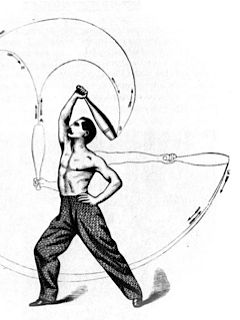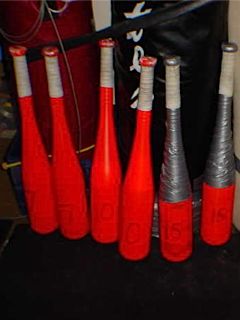
Clubs are wonderful things. If you've ever tried sledgehammer levering, you'll be familiar with the concept - a heavy, unstable weight held at a distance; and moved under control. Different tool, similar feeling.
Of course, clubs are used for much more than that. For a peek into their history, and to get an idea of how they are used, take a look at these sites :
- The Secret World of Indian Clubs
Tom Black. - Treasures in the Attic [504kb, .pdf]
From the January 2002 issue of Tae Kwon Do Times.
Making your own clubs
The fun - from my point of view, anyway - also comes from the creation of the equipment. I love being able to use gym gear that I've made; it's a particularly satisfying feeling. When it comes to clubs, the thinking's no different. Here's how to make your own clubs.
The Equipment
Before you head down to the nearest hardware store, consider this : there are two basic techniques for making your own clubs - each with their own parts list. Here are the details.
Filled

- plastic toy club (hollow), usually available cheaply at bargain stores and service stations
- small bag of sand, cement or other heavy, granular material (if you've ever made a sandbag, grab the same stuff - works well)
- tube of plastic-friendly glue
- grip wrap or duct tape
The assembly process is fairly straight-forward. Cut a small circle in the base of the club's handle, insert a funnel and slowly fill it with the sand or cement. When the club is almost filled, swing it about a bit to compress the sand/cement at the top.
Remember to plug the hole you've just made (using a plastic-friendly glue).
To make the handle a little less slippery, add some duct tape or the wrap used on cricket bats and tennis rackets. If you made the nunchaku, it's the same stuff.
The final weight of the club can be easily adjusted using ankle weights. Just slip them over the handle and push them up as far as they'll go.




 Via
Via  Via
Via 